Thank you to Pamela Sampel, OblSB, who is a former board member of The Circle Way, and an instructor with Western Washington University’s College of Business & Economics, for sharing her reflections on using circle in higher education.
Using The Circle Way in Higher Education—A Personal Experience
I teach in the College of Business and Economics for Western Washington University, Washington State’s third largest public university, based in Bellingham, Washington. In addition to my teaching experience, I’m an experienced circle practitioner, having used The Circle Way (TCW) methodology since its inception in the mid-1990’s both as an experienced HR/OD executive and as a leadership coach.
In 2016, I chose to make TCW a required secondary text for all my classes. This would allow me not only to teach TCW to my students, but also to conduct the classroom experience using the principles and practices of TCW. I wanted to demonstrate collaborative and rotating leadership in action, as well as attentive listening and intentional speaking and the process of council. I believe TCW is a natural fit as well as a way for the students to experience firsthand how the process works. I also believe it would strengthen relationships and create a more intimate and supportive environment that would enhance learning. Students are required to purchase the TCW text and asked to read the first six chapters before the first class.
From the beginning, most students take to the idea, although some are wary and wonder whether this is going to be too “NEW AGEY?” I ask them to trust the process and to be willing and open to experience outcome.
How we begin: Having read chapters 1-6 in TCW, students arrive with a basic understanding of the mechanics, as well as the whys, of being in Circle. I explain the guardian role, and that for the first two classes, I will act as the “main guardian,” but that each of them is encouraged/expected to help as they experience class situations that need a guardian action. During the first session I answer all their questions about the process and take them through a “sample” class. I explain that our “Center” will be our class curriculum as well as anything each of them would like to contribute to our center as to WHY they are in school at this time/taking this class. To help them understand this piece, I assign a written document of “WHO I AM” that informs the class about who they are as a student and why they are in school currently. I urge them to do this in a way that feels powerful for them: they are encouraged to write a poem, perform a rap, tell a story, draw a picture, use pictures or photos, write a play, etc. (What they cannot do is use PowerPoint.) I have a personal WHO I AM document about myself that I share at this time. I explain they will present their WHO I AM documents during the second class.
When the second class begins, we “dive in”. To demonstrate the shift required from regular conversation to our learning environment classroom conversations, I ring a Tibetan singing bowl and tell them we will use this bowl every time to begin and enter/exit our classroom circle. I place the syllabus in the “center.” Then we do a check-in using the question “how am I arriving at class today.” Am I tired? Excited? Nervous? Wary? Busy? Is there something going on in my life that I want my classmates to know that may affect my performance? This has been a particularly important beginning ritual during the pandemic as many students are juggling different rigorous and changing work demands, often childcare or sibling care, and sometimes elder care. After everyone has checked in, I ring the bowl again to signify we are ending this activity and moving to the next, which will be the “WHO I AM” exercise. I ask for a volunteer to go first, and ring us back in and wait. Generally, it takes a moment or two before someone steps forward. After they finish, they are instructed to pick someone to go next and we work through the class like this. If there is a particularly poignant story that affects us powerfully, I ring the bell and ask for reflective silence to bring our focus back to be able to listen well to the next person speaking. We move through the students until everyone has had a chance to speak, or pass, and then we give those students who initially pass another chance to speak. Note: I do not force students to do this exercise in class if they really don’t want to, but I do expect them to turn in a written document answering the question, “WHO I AM.” To this day, I haven’t had one student elect to pass entirely on this assignment. After we’ve completed this round, I ring us out and we take a 15-minute break. When we return, I ring us in and begin that day’s first teaching module. Occasionally, I forget to “ring us out” and over time, a student will call out, “Professor—remember to ring the bowl so we know it’s time to close.” That’s when I know they are starting to understand and live the process. By the fourth class, generally, a student will ask to BE the main guardian and have responsibility for the Tibetan bowl. It’s a wonderful moment in time, to turn this responsibility over. By the end of the quarter, almost everyone has requested a turn being the guardian. In fact, sometimes students will bring a hat or a pin and this will signify “who” the guardian is for that day. We also use a talking piece for some conversations.. This is the general rhythm of our class circles: Housekeeping/Check-in’s/Teaching Modules, and if we have time…a brief check out: how students leave class that day.
General Observations: Usually the TCW process as I describe above works well, and by the end of the quarter I often receive comments like, “Wow, this is a cool process…and something I can see using in my church, in my family, at work, with a group I’m in, etc.” One obvious note is that a classroom is still a “hierarchical structure” where I have responsibility for their grades and the very fact that I choose to lead the classroom this way isn’t debatable or controversial or a hot topic (usually.) Occasionally, though, I will have a student or two who want to discuss “this process we are using,” and we do that in front of the entire class, so that students can experience me in action practicing the tenets of TCW: attentive listening, intentional speaking, requesting silence, using a talking object if appropriate, asking if the student is willing to try, summarizing their objections. In fact, in some of the subject classes like negotiations and conflict management, using TCW methodology has been powerful because I can demonstrate negotiation techniques in a dialogue moment and ask, “did that work well?” …and then have a discussion as a result. The process allows for wonderful class participation and does encourage listening/paying attention. Leadership often blossoms as students gain courage and skills and feel supported and not in a forced “performance mode” that will be graded. (They receive points for attending class and participating in TCW process—not on any “how” of their participation.)
During the pandemic I initially worried TCW would NOT work as well remotely, because we weren’t in person and couldn’t have a physical center and use talking objects, but ironically, in some ways I think TCW has worked better remotely and allowed for a greater intimacy to occur—more so than being physically together. Partly because I believe we experience each other in our “home environments” and I encourage student’s sharing of their space, their artwork, and their bookshelves. We meet people’s pets, sometimes family members, and generally experience each other at a level that doesn’t occur in the formal classroom. One of the things I do when I present my “Who I AM” piece for the students is give them a “tour” of my small home office where I teach, so they can see my bookshelves, my desk and its piles and files and my collections and artwork. I believe it humanizes me as their instructor in ways that make me more approachable. I often “hang out” on Zoom after class, like I do in person in the classroom, so if students want to chat about anything…class related or not, I’m in.
Does TCW always work well? No, not always. Some classes for whatever reasons, seem to “take” to the process more quickly and easily than others.
Overall, though, for me as an instructor in higher education, using TCW as the framework for my courses has worked well, and I cannot imagine not using it now—it’s truly become second nature. My course evaluations reflect that students appreciate the methodology. I encourage any academic instructors to try it--and understand that TCW process adapts itself well in a learning environment and is generally open and forgiving of any “mistakes” or a “need to perform.” All experiences become learning moments—and isn’t that one of the best things that can happen in a classroom?
Pamela Sampel, OblSB
Pamela is a professor, writer, retreat facilitator, and spiritual director, with 30 years of experience specializing in collaborative leadership and emotional intelligence skill development. She has a warm and irreverent sense of humor—clients and friends describe her as a spirited leader with an ability to inspire and motivate.
Pamela holds bachelor’s and master’s degrees in business and non-profit management and certificates in leadership coaching and spiritual direction. She is an Oblate of St. Benedict at St. Placid Priory in Lacey, Washington. Pamela currently works as a professor (NTT) at Western Washington University (WWU) in the College of Business and Economics, facilitates Sanctuary and Sustenance, a writing retreat for women, and works on a hybrid memoir at her desk in Port Townsend on the edge of the Salish Sea. Learn more about Pamela at www.pamelasampel.com.


